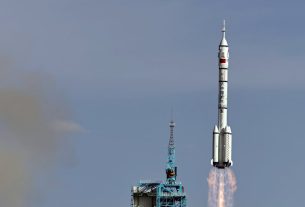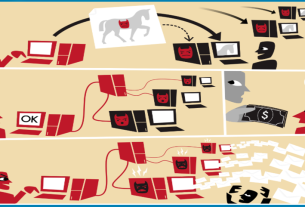|
Getting your Trinity Audio player ready...
|
In the critical 72 hours after an earthquake or explosion, a race against the clock begins to find survivors. After that window, the chances of survival drop sharply.
When a powerful earthquake hit central Italy on 24 August 2016, killing 299 people, over 5 000 emergency workers were mobilised in search and rescue efforts that saved dozens from the rubble in the immediate aftermath.
But the pressure to move fast can create risks for first responders, who often face unstable environments with little information about the dangers ahead. But this type of rescue work could soon become safer and more efficient thanks to a joint effort by EU and Japanese researchers.
Supporting first responders
Rescue organisations, research institutes and companies from both Europe and Japan worked together from 2019 to 2023 to develop a new generation of tools blending robotics, drone technology and chemical sensing to transform how emergency teams operate in disaster zones.
“
It is a prototype technology that did not exist before.
Their work was part of a four-year EU-funded international research initiative called CURSOR, which included partners from six EU countries, Norway and the UK. It also included Tohoku University, whose involvement was funded by the Japan Science and Technology Agency.
The researchers hope that the sophisticated rescue kit they have developed will help rescue workers locate trapped survivors faster, while also improving their own safety.
“In the field of search and rescue, we don’t have many technologies that support first responders, and the technologies that we do have, have a lot of limitations,” said Tiina Ristmäe, a research coordinator at the German Federal Agency for Technical Relief and vice president of the International Forum to Advance First Responder Innovation.
Meet the rescue bots
At the heart of the researcher’s work is a small robot called Soft Miniaturised Underground Robotic Finder (SMURF). The robot is designed to navigate through collapsed buildings and rubble piles to locate people who may be trapped underneath.
The idea is to allow rescue teams to do more of their work remotely, localising and finding humans from the most hazardous areas in the early stages of a rescue operation. The SMURF can be remotely controlled by operators who stay at a safe distance from the rubble.
“It is a prototype technology that did not exist before,” said Ristmäe. “We don’t send people, we send machines – robots – to do the often very dangerous job.”
The SMURF is compact and lightweight, with a two-wheel design that allows it to manoeuvre over debris and climb small obstacles.
“It moves and drops deep into the debris to find victims, with multiple robots covering the whole rubble pile,” said Professor Satoshi Tadokoro, a robotics expert at Tohoku University and one of the project’s lead scientists.
The development team tested many designs before settling on the final SMURF prototype.
“We investigated multiple options – multiple wheels or tracks, flying robots, jumping robots – but we concluded that this two-wheeled design is the most effective,” said Tadokoro.
Sniffing for survivors
The SMURF’s small “head” is packed with technology: video and thermal cameras, microphones and speakers for two-way communication, and a powerful chemical sensor known as the SNIFFER.
This sensor is capable of detecting substances that humans naturally emit, such as C02 and ammonia, and can even distinguish between living and deceased individuals.
Put to the test in real-world conditions, the SNIFFER has proved able to provide reliable information even when surrounded by competing stimuli, like smoke or rain.
According to the first responders who worked with the researchers, the information provided by the SNIFFER is highly valuable: it helps them to prioritise getting help to those who are still alive, said Ristmäe.
Drone delivery
To further improve the reach of the SMURF, the researchers also integrated drone support into the system. Customised drones are used to deliver the robots directly to the areas where they’re needed most – places that may be hard or dangerous to access on foot.
“
Ιt moves and drops deep into the debris to find victims, with multiple robots covering the whole rubble pile.
“You can transport several robots at the same time and drop them in different locations,” said Ristmäe.
Alongside these delivery drones, the CURSOR team developed a fleet of aerial tools designed to survey and assess disaster zones. One of the drones, dubbed the “mothership,” acts as a flying communications hub, linking all the devices on the ground with the rescue team’s command centre.
Other drones carry ground-penetrating radar to detect victims buried beneath debris. Additional drones capture overlapping high-definition footage that can be stitched together into detailed 3D maps of the affected area, helping teams to visualise the layout and plan their operations more strategically.
Along with speeding up search operations, these steps should slash the time emergency workers spend in dangerous locations like collapsed buildings.
Testing in the field
The combined system has already undergone real-world testing, including large-scale field trials in Japan and across Europe.
One of the most comprehensive tests took place in November 2022 in Afidnes, Greece, where the full range of CURSOR technologies was used in a simulated disaster scenario.
Though not yet commercially available, the prototype rescue kit has sparked global interest.
“We’ve received hundreds of requests from people wanting to buy it,” said Ristmäe. “We have to explain it’s not deployable yet, but the demand is there.”
The CURSOR team hopes to secure more funding to further enhance the technology and eventually bring it to market, potentially transforming the future of disaster response.
Research in this article was funded by the EU’s Horizon Programme. The views of the interviewees don’t necessarily reflect those of the European Commission. If you liked this article, please consider sharing it on social media.
Showcasing EU research at the World Expo
Osaka, Japan
13 April – 13 October
This summer, millions of people from around the world will head to Osaka, Japan, for Expo 2025. At this global gathering, countries and regions will share how they’re tackling some of today’s biggest challenges, from sustainability and digital connectivity to inclusivity and security.
The central theme of this year’s event is Designing Future Society for Our Lives. Visitors will get a chance to see how EU-funded research is helping shape that future. The EU’s Nurturing Tomorrow pavilion reflects Europe’s commitment to building a greener, more connected and inclusive world.
The EU pavilion is hosting exhibitions, talks and interactive experiences that spotlight cutting-edge EU research and innovation projects aimed at solving real-world problems and building international cooperation. Whether you’re curious about the future of clean energy, digital tech, or inclusive design, there’s something for everyone.
Visitors to the Expo will see the CURSOR robots in action during the event’s “Learning and Playing” thematic week from 18 to 22 July. Participants in the organised activities will be able to navigate the robot and follow its real-time data feed as it searches for victims trapped underground.
Virtual visit
Can’t go to Osaka? Explore the Expo online at: https://www.expo2025.or.jp/en/future-index/virtual/virtual-site/



